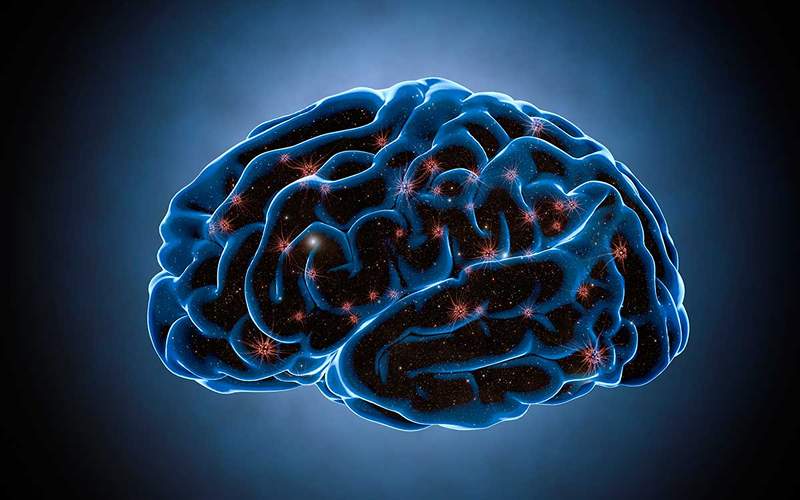How do mirror neurons work?

- 3897
- 1199
- Jeffery Jones
Espejo neurons are a special class of brain cells that makes empathy possible.
Content
Toggle- Origin of the discovery of mirror neurons
- What are mirror neurons for us
- Understand sensations and emotions
- Mirror neurons and our social interaction
- References
Origin of the discovery of mirror neurons
In the early 90s Italian researchers made an unexpected but amazing discovery. To perform an experiment they implemented electrodes in the brains of macaques to study the brain activity of animals during different motor actions, including food taking. One day, when a researcher took his own food being in front of them, he observed that the neurons of the macaques began to shoot in the pre -agent cortex, in the same area that showed activity when the animals made a similar movement with the hand. How could this happen when the monkeys were still and simply watching it?
During the following two decades, this fortuitous discovery of mirror neurons has radically altered our way of thinking About our brains and about ourselves, particularly in the social sphere.
What are mirror neurons for us
Before this discovery about mirror neurons, scientists believed that our brains used logical thinking processes to interpret and predict other people's actions. Now, however, many have concluded that We understand others not thanks to thought, but to feel.
Apparently mirror neurons allow us to "reproduce" not only the actions of other people, but the intentions and emotions behind those actions.
For example, when we see someone smile, our mirror neurons of the smile are automatically activated, creating the feeling of happiness in our own mind. We do not think logically or analytically that the other person is smiling. We simply understand the meaning and empathize with the person immediately and effortlessly.
Espejo neurons research is helping scientists reinterpreting the neurological bases of social interactions. These studies are improving our understanding on:
- The vision of how and why we develop empathy towards others.
- Autism, schizophrenia and other disorders characterized by difficulty in social interactions.
- The evolution of language.
- New therapies to help patients with stroke to recover the lost movement.
 Emotional manipulation
Emotional manipulation Understand sensations and emotions
With this mechanism we are not only able to observe an action, an emotion or a sensation, but We are able to make internal representations of the bodily states associated with these actions, emotions and sensations, being able to evoke a similar action or experience a similar emotion or sensation.

Bruno Wicker and his colleagues, from the Institute of Physiological and Cognitive Neurosciences of the Mediterranean of Marseille, France, carried out brain explorations of people who experienced pleasant, neutral and disgusting odors, and after the same people watching a video of other individuals who experienced dislike.
In this study they found that when observing the faces and feelings of disgust of others, the same brain centers were activated as they were those who directly experienced such sensations. Interestingly, the study also showed a certain overlap between the brain areas involved with pleasure and disgusting.
Mirror neurons and our social interaction
Apparently, We understand sensations and emotions in a quite direct way and not through some complex cognitive process. The experiences of a third person feeling a specific emotion, presents a shared neural activity when we observe its facial expression, so that this perception leads us to experience the same.
The mirror neurons system allows us to decode (receive and interpret) facial expressions. If we are observing a specific expression or making it ourselves, the same regions of our brain are activated. And the better we interpret facial expressions, the more active our mirror neurons system.
These findings suggest that The mirror neurons system plays a key role in our ability to empathize and socialize with others, Because we communicate our emotions mainly through facial expressions. And, in fact, studies have found that people with autism seem to have a dysfunctional mirror neuronal system.
Apparently, the more severe the symptoms of autism, the less active the mirror neurons system will be. Studies have shown that children with autism have difficulty understanding the intention of others based on the action they observe. To discern what others do, they depend on the meaning of the object or the context in which the action is performed.
Currently, imitative behavior is being used to try to counteract this deficit. Similar imitative training techniques are also being explored to rehabilitate people whose motor skills have been damaged by a stroke or other brain injury.
It may interest you: Child Autism and Mirror Neurons
Classification of neurons according to function and structure
References
- Dapretto M, Davies MS, Pfeifer JH, Scott AA, Sigman M, Bookheimer Sy, Iacoboni M. Nature Neuroscience . 2006; 9 (1): 28-30. Understanding the emotions of others: mirror neuronal dysfunction in children with autistic spectrum disorders.
- Di Pellegrino G, Fadiga L, Fogassi L, Gallese V, Rizzolatti G. Experimental Brain Research. 1992; 91 (1): 1432 - 1106.
- Enticott PG, Johnston PJ, Herring Se, today KE, Fitzgerald PB. Neuropsychology . 2008; 46 (11): 2851 - 2854. The activation of the mirror neuron is associated with the processing of facial emotion.
- ERTELT D, SMALL S, SOLODKIN A, DETTMERS C, MCNAMARA A, BINKOFSKI F, BUCINO G. Neuroimagen . 2007; 36 (Suppl. 2): T164-T173. The observation of the action has a positive impact on the rehabilitation of the motor deficits after the stroke.
- Iacoboni M, Dapretto M. Nature Comments Neuroscience. 2006; 7 (12): 942 - 951. The mirror neurons system and the consequences of its dysfunction.
- Oberman LM, Hubbard Em, McCleery JP, Altschuler el, Ramachandran V, Pineda Ja. Brain research. Cognitive Brain Research. 2005; 24 (2): 190 - 198. EEG and the evidence of the nuroon mirror dysfunction in autistic spectrum disorders.
- « Mindfulness for parents and children finding balance
- How are people who prefer to live alone and don't care about singleness »

